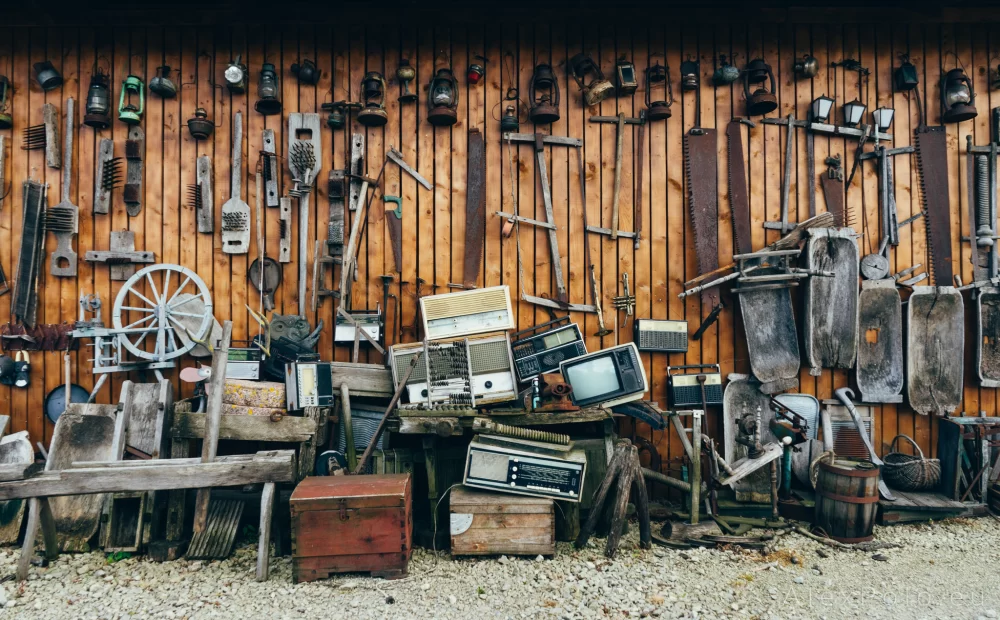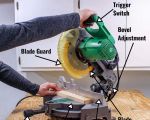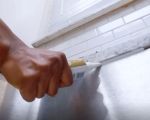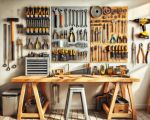Why Cleaning Your Power Tools After Heavy Use is Crucial
As a DIY enthusiast or a professional, using power tools is an everyday task that requires proper care and attention. But one aspect often overlooked is cleaning them after heavy use. Power tools endure a lot of wear and tear, and if you don’t clean them properly, it can lead to reduced performance, higher maintenance costs, and even potential safety hazards. Let’s explore why cleaning your power tools is essential and how you can do it efficiently.
The Impact of Not Cleaning Power Tools
When you don’t clean your tools after a hard day’s work, dust, dirt, grease, and other residues accumulate, leading to long-term damage. For example, sawdust can get lodged in the motor of a circular saw or drill, which may cause the tool to overheat or malfunction. Similarly, dirt can cause friction, making the tool less efficient and reducing its lifespan. Failure to clean and maintain your tools can result in expensive repairs or replacements that could have been avoided with a little regular maintenance.
Steps for Properly Cleaning Power Tools After Heavy Use
Cleaning your power tools doesn’t have to be complicated. With the right approach, it can become a simple and quick part of your routine. Here are some steps you can follow:
1. Disconnect Power and Remove Batteries
Before starting any cleaning process, safety comes first. Always disconnect the power supply or remove the batteries from your power tools. This ensures that the tool doesn’t accidentally turn on while you’re cleaning it, which could lead to injury.
2. Remove Any Visible Dirt or Debris
Start by removing any large pieces of debris from your tool. You can use a soft brush or a clean rag to wipe off dirt, sawdust, and other visible residues. For hard-to-reach areas, a toothbrush or small cleaning brush will do wonders.
3. Clean the Moving Parts
For power tools with moving parts like drills, saws, or sanders, it’s essential to ensure these components are free of any buildup. Using compressed air can help dislodge any dirt trapped in gears or motors. Be sure to blow the air in the direction opposite to where the motor or fan blades are located, to avoid forcing debris deeper into the components.
4. Lubricate the Parts
After cleaning, lubricating moving parts is crucial to maintain their functionality and reduce wear. Apply a lubricant designed for your tool, focusing on areas like the gears, bearings, and joints. Over-lubricating can cause dirt to stick, so a light application is often sufficient.
5. Clean the Exterior and Casing
Once the internal parts are cleaned, you can move on to the exterior. Wipe down the casing with a damp cloth and mild detergent. Avoid soaking the tool in water or using harsh chemicals that can damage the surface. Make sure to dry it thoroughly to prevent rust.
6. Inspect for Damage or Wear
After cleaning, take a moment to inspect your power tool for any signs of wear or damage. Check the cables, housing, and other components for cracks, frays, or signs of overheating. Early detection can save you from costly repairs down the line.
Preventive Care Tips for Longer Tool Life
While cleaning is essential for maintaining your tools, there are a few additional preventive steps you can take to ensure your power tools last longer:
1. Store Tools Properly
Proper storage is key. Avoid leaving your tools in damp or overly humid environments, as moisture can cause rust and corrosion. Store tools in a dry, cool place where they are protected from dust and debris.
2. Regular Maintenance Schedule
In addition to cleaning, make sure to perform regular maintenance on your power tools. Check the battery levels, inspect the tool’s performance, and clean them thoroughly after each use. Create a schedule for this routine to ensure you don’t forget.
3. Use the Right Tools for the Job
Another key factor in maintaining your power tools is using them correctly. Always use the right tool for the job, as improper use can cause excessive wear and tear. For example, using a drill for tasks that require a hammer can lead to mechanical failure over time.
Personal Story: How Proper Tool Maintenance Saved My Favorite Drill
I’ll never forget the time I was working on a big home renovation project. My trusty drill had been through everything—from drilling holes in concrete to assembling furniture—and it was showing signs of wear. At one point, it started making a strange noise, and I was sure it was about to break. Fortunately, I decided to clean it thoroughly before taking it to a repair shop. After a proper cleaning, lubrication, and inspection, my drill worked like new! The whole experience taught me just how crucial proper maintenance is for preserving the life of your power tools.
Conclusion: Take Care of Your Power Tools, and They’ll Take Care of You
Cleaning and maintaining power tools after heavy use may seem like an extra chore, but it’s a necessary step for ensuring their longevity, efficiency, and safety. By following the simple steps outlined above, you can keep your tools in top condition for years to come. Trust me, a little maintenance now will save you time, money, and frustration in the long run.









